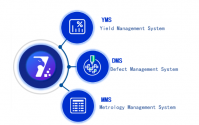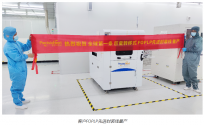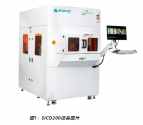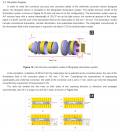Oriental Jingyuan YieldBook 3.0 "BUFF Stacked" DMS+YMS+MMS three major systems enable integrated circuit yield management
Yield is an important indicator in chip manufacturing. If the advanced process represents the leading edge of wafer fab technology, then the product yield represents the reliability and economy of its products. Under the condition of fixed manufacturing cost, the higher the yield, the lower the cost of a single chip. Every step in wafer design and manufacturing affects the yield of the chip. Therefore, the key to improving chip yield lies in complete and effective monitoring and testing of the manufacturing process, while analyzing the data in the manufacturing process to promptly identify problems and potential risks, and feedback to the integrated circuit manufacturing and design ends to improve the process and design.

Aiming at this demand and pain point of the industry, Oriental Crystal Source launched the yield management platform YieldBook. After more than two years of iterative upgrades, version 3.0 was recently launched. This version gives full play to Oriental Crystal Source's advantages in computational lithography software OPC and electron beam measurement and testing equipment, becoming the industry's first one-stop yield management software to achieve comprehensive measurement data (MMS), defect data (DMS), and yield data (YMS). It can perform individual process quality monitoring, overall defect rate statistics, yield loss traceability analysis, feedback manufacturing difficulties to the upstream design end, etc., comprehensively monitor factors affecting yield and assist in yield improvement.
Three major systems cover all data types of Fab to achieve one-stop yield management throughout the entire process
The factors affecting the yield of chip products may include design, process and equipment. A complete root cause analysis of the yield requires a comprehensive analysis of data from these three aspects, so the ability of yield management depends on the size of the data range analyzed. In the past, FAB engineers needed to use a variety of tools such as MMS, DMS, and YMS. The YieldBook yield management platform brings together the three major systems of MMS, DMS, and YMS, which can realize the analysis of all data types of Fab. It is worth mentioning that the YieldBook platform is not a simple carrier for the above three systems. It can realize cross-analysis of underlying data between different systems, providing more benefits for yield management.
Four major features "support" yield management adds "new gameplay"
The YieldBook yield management platform also has four major features that bring "new ways of playing" to FAB engineers. (1) Defect Similar Pattern Map Search: Select the base wafer in the Map gallery, set the search conditions in multiple dimensions, and automatically present the search similar results for engineers to further analyze and find the cause of the defect; (2) PME (Process Margin Explorer): Based on the D2DB defect detection algorithm, the wafer inspection image is compared with the design layout to identify the defect layout information that affects the process window; (3) Auto Ink: Supports automatic/manual calibration of the entire area or partical area of a single or batch wafer, improving the efficiency of Inkless Map calibration when the wafer is shipped; (4) RDMS (Reticle Defect Management System): Analyze Retical related data, and present the analysis results in the form of defect heat map, repeated defect number summary, scan defect data chart, etc., so as to achieve defect management of the mask.



